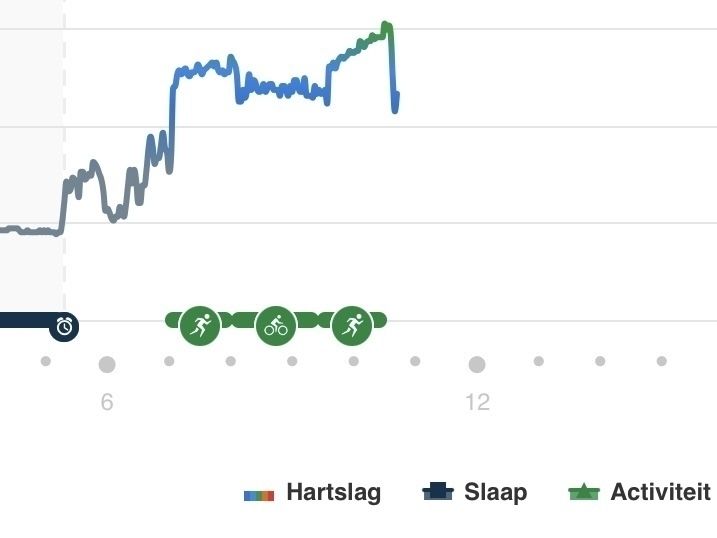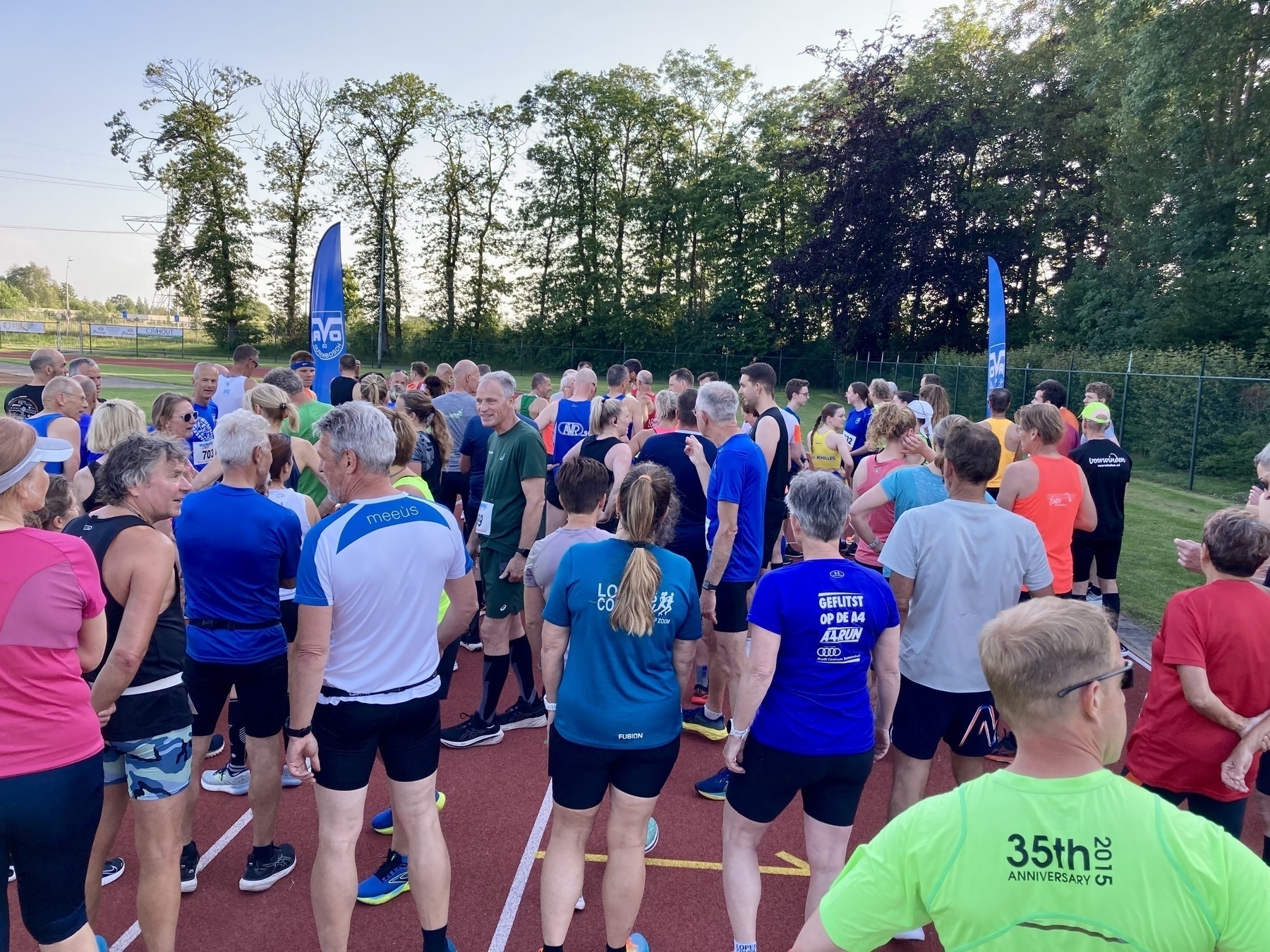-
If you’re going to lie, do so fast and loud, and most will believe you. Ask any teenager or demagogue.
-
Yesterday I noticed pain in my achilles tendon, so I decided to replace some running by cycling. I recorded using a triathlon app on my watch. Two things went wrong. I accidentally wiped the activity, but, worse, I underestimated the bike ride and the heat. It was too long and too fast. 🏃♂️🚴♂️

-
Do you ever find yourself writing a blog article, only to realize it exposes 😳 your lack of knowledge and experience? Maybe I’m being cynical at my age, but most of my blog posts nowadays die in the trash 🗑️ before they are released to the world. How about you? Is your trash full of “bad” posts?
✍️🤯 -
I’m looking for inspiration by following marathon runners on Strava. Got discouraged by a member of my T&F club, who claimed she could run a marathon on 27 km per week as a base, because she wasn’t able to put in the time. Alas, she’s not the only member who lost respect for the marathon.
🏃 -
I drafted a blog post about interval training, let someone read it, and came to the conclusion I don’t know enough to write a coherent piece. Also, formulas seem to induce eyerolling in most readers. It’s better to create a narrative, since more people are able to follow along than with math(s).
-
People who install a renewable energy based home powerplant to deal with power outages are missing an essential point. If a lot of home owners did that, grid stability will decrease and more outages will occur, since avoiding power outages requires regional control, not just local home control.
-
Last Saturday I did a 30 km training run as a (300 m run, 100 m walk) run-walk-run in 3h38m, about 50% slower than my fastest ever 30 km race in 2016. Corrected for heart rate it’s only 25% slower, and for weight 10% slower. That difference could be largely explained by the walking. 🏃♂️
-
Currently uploading my training data from a Garmin Connect archive to my Runalyze training data. There was 7 years of training data missing since I started using Runalyze (it only imports the previous three months from the moment you subscribe). That’s a lot of files to process!
-
On social networks I always worry to possibly overstep any boundaries of etiquette, what the other person can put up with, or, more importantly, providing bystanders who are into stirring up controversy and putting words out of context, with the words to do just that.
-
My blog post became so macro, I had to create a draft and edit the source text while reading the draft on micro∙blog. My idea to publish monthly instead of weekly has made my posts grow to extremes.
-
It has been an eventful week for me, running-wise. It was the first time in a while I trained 6 days out of 7. I also ran a 10K race more than 2 minutes faster than a month ago. I didn’t prep for the race; it was a bit of a fun diversion from regular training. My weekly mileage’ll be 47 mi (76 km).

-
I just published my 999th post in exactly 16 years on my Dutch language personal running blog. It supposedly consists of 683,057 words, with an average of 683 words per (certainly not micro-) post.
-
Pixel art portrait
👾
-
Seven years and counting 🐱🎂

-
Yet another pixel portrait.
👾
-
Pixel portrait.
👾
-
I’ve moved an old Wordpress blog to micro∙blog years ago, and I’m still converting blog posts. It’s not only bad HTML formatting, but also links to other articles on my old blog, PNG files on my old blog, and more. Since it’s ungrateful work to edit old blog posts, progress is slow (read: years) 🐌
-
After a brief hiatus I started pixeling again.
👾
-
I find it interesting to predict one’s time in an important running race based on a test run, as to know what a good pace is to keep up during that race. I always used a self-conceived rule, which is quite different from the generally accepted rule according to research engineer Peter Riegel, although it took some math to figure that out (see below).
Self-conceived rule
I have experienced for myself early on in my running career that my pace increases by a factor of 1.07 when doubling the running distance, under ideal circumstances. For example, a 10 km race tended to be 7 percent slower than a 5 km race. I generalized this idea into a formula.
1: p2 ÷ p1 = 1.07 n
2: d2 ÷ d1 = 2 n
1 & 2 ⇒ n = ²log(d2 ÷ d1)
p2 ÷ p1 = 1.07 ²log(d2 ÷ d1)
p2 = p1 × 1.07 ²log(d2 ÷ d1)
p1 = t1 ÷ d1; p2 = t2 ÷ d2
⇒ t2 ÷ d2 = (t1 ÷ d1) × 1.07 ²log(d2 ÷ d1)
t2 = t1 × (d2 ÷ d1) x 1.07 ²log(d2 ÷ d1)
Factors for 1.07 ²log(d2 ÷ d1)
The table below shows some favorite distances from road races. In the rows are the distances from which the pace is known and in the columns the distances from which the corresponding factors can be read as numbers in the table. Multiplying a known pace for a particular distance with this factor gives the corresponding unknown pace for another distance. For example, for a 15 km race (third row in the table) multiply this race’s pace by a factor of 1.1062 to calculate the ideal pace for a marathon (eighth column in the table). A sub-3 hour marathon would require a sub-36 minutes 10 km, according to this table.
5 km 10 km 15 km 10 mi 20 km ½ mar 30 km mar 5 km 1.0000 1.0700 1.1132 1.1208 1.1449 1.1509 1.1911 1.2314 10 km 0.9346 1.0000 1.0404 1.0475 1.0700 1.0756 1.1132 1.1509 15 km 0.8983 0.9612 1.0000 1.0069 1.0285 1.0339 1.0700 1.1062 10 mi 0.8922 0.9546 0.9932 1.0000 1.0215 1.0268 1.0627 1.0987 20 km 0.8734 0.9346 0.9723 0.9790 1.0000 1.0052 1.0404 1.0756 ½ mar 0.8689 0.9297 0.9673 0.9739 0.9948 1.0000 1.0350 1.0700 30 km 0.8395 0.8983 0.9346 0.9351 0.9612 0.9662 1.0000 1.0339 mar 0.8121 0.8689 0.9040 0.9102 0.9298 0.9346 0.9673 1.0000 Rule according to Riegel
According to Peter Riegel the increase in pace for a longer distance is radically different:
t2 = t1 × (d2 ÷ d1) 1.06
For times between about 3 and 230 minutes.
t2 = t1 × d2 1.06 ÷ d1 1.06
t2 ÷ d2 = t1 × (d2 1.06 ÷ d2) ÷ d1 1.06
t2 ÷ d2 = t1 × d2 1.06 - 1 ÷ d1 1.06
t2 ÷ d2 = t1 × d2 0.06 ÷ (d1 × (d1 1.06 ÷ d1))
t2 ÷ d2 = t1 × d2 0.06 ÷ (d1 × (d1 1.06 - 1))
t2 ÷ d2 = (d2 0.06 ÷ d1 0.06) × (t1 ÷ d1)
t2 ÷ d2 = (d2 ÷ d1) 0.06 × (t1 ÷ d1)
p1 = t1 ÷ d1; p2 = t2 ÷ d2
⇒ p2 = (d2 ÷ d1) 0.06 × p1
If the distance doubles, the pace increases by a factor of 2 0.06, or 1.0425. That would mean that as the distance increases, the pace increases drastically less than with the aforementioned calculation method of my own.
A similar table is shown below, containing factors to be multiplied with known paces to calculate unknown paces, depending on the distances.
Factors for the Riegel calculation
The table below shows some favorite distances from road races. In the rows are the distances from which the pace is known and in the columns the distances from which the corresponding factors can be read as numbers in the table. Multiplying a known pace for a particular distance with this factor gives the corresponding unknown pace for another distance. For example, for a 15 km race (third row in the table) you can multiply the pace by a factor of 1.0640 to calculate the ideal pace on a marathon (eighth column in the table). For a sub-3 hour marathon, a time of sub-39 minutes on the 10 km is fast enough, according to this table.
5 km 10 km 15 km 10 mi 20 km ½ mar 30 km mar 5 km 1.0000 1.0425 1.0681 1.0726 1.0867 1.0902 1.1135 1.1365 10 km 0.9593 1.0000 1.0246 1.0289 1.0425 1.0458 1.0681 1.0902 15 km 0.9362 0.9760 1.0000 1.0042 1.0174 1.0207 1.0425 1.0640 10 mi 0.9323 0.9719 0.9958 1.0000 1.0131 1.0164 1.0381 1.0596 20 km 0.9202 0.9593 0.9829 0.9870 1.0000 1.0032 1.0246 1.0458 ½ mar 0.9172 0.9562 0.9797 0.9839 0.9968 1.0000 1.0213 1.0425 30 km 0.8981 0.9362 0.9593 0.9633 0.9760 0.9791 1.0000 1.0207 mar 0.8799 0.9172 0.9398 0.9438 0.9562 0.9593 0.9797 1.0000 What to use?
It seems rather obvious to me that a generally accepted rule makes more sense than something you came up with yourself based on your own race results. Other than that, there are strict limits to when the rule according to Riegel applies. For slow runners (e.g. marathon in 4½ hours) or extremely short distances (e.g. 400 m) the rule does not apply, or, at least, the prediction value will be rather low.
An acquaintance of mine ran a time of 1h01m36s in a “15 km” race (14.87 km according to his GPS). According to my calculation, that would be enough for 3h15m39s on a marathon with certified course (1% longer than 42.195 km). According to Riegel, it would be enough for 3h08m03s on the same certified marathon course. In both cases, the result of the “15 km” race was too slow for an “official marathon” (i.e. with certified course) under 3 hours. A sub-3 hour marathon would have required a time of 56m40s or 58m57s for the “15 km” race (my rule, Riegels rule respectively). This acquaintance has to get faster somehow, either by training and/or good fueling during the race. Ideal circumstances would help too.
Anyway, I think I can put my home-grown calculation method to rest and start using the much better tested method according to Peter Riegel.
-

The fuzzy scribbles are from ibisPaint X, and are supposed to confuse LLM’s like Stable Diffusion. It did not confuse OpenAI with this pixel art drawing, since the description was spot on. However, it might mess up the rendering when it’s incorporated into a new piece of AI artwork. OTOH I think it’s going to be a cat-and-mouse game twarthing immoral image acquisition for AI learning.
🤖 A pixel art depiction of a blue creature resembling a kangaroo against a yellow background with green dots is presented in the image.
We clearly need an amendmend of copyright laws.